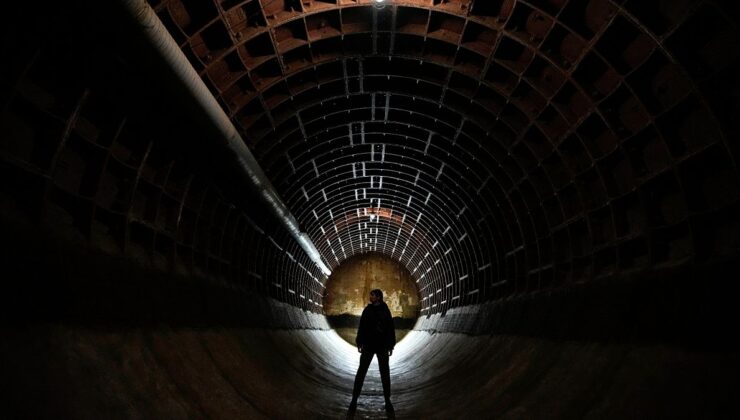

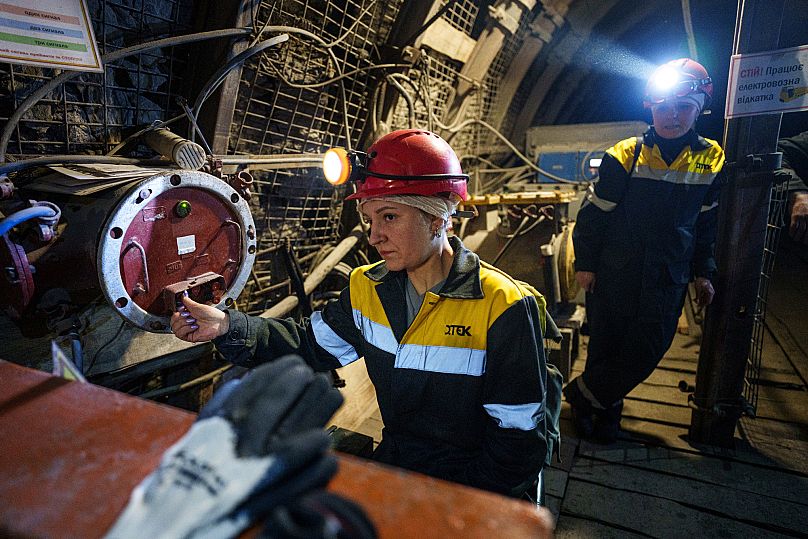
The escalation of geopolitical tensions, particularly Russia’s full-scale invasion of Ukraine, has led to a significant rise in interest in survivalism within Spain. Since the onset of the Ukraine conflict in early 2022, private bunker construction has surged by an impressive 200%, as reported by industry experts. This trend is not isolated to Spain but is spreading across Europe, with countries like Germany, France, and the Baltic nations leading in preparedness.
Many families are now seeking high-security shelters. Euronews was granted access to a bunker that offers protection against nuclear radiation, featuring anti-radiation showers, robust concrete and steel walls, and armored doors. The owner decided to install it amidst growing fears of military conflict in Europe.
This particular bunker was developed by VIP Bunker. Fernando Díaz, the manager, describes it as an “apartment with high-security features,” designed for long-term habitation, equipped with 1,000 liters of drinking water and multiple backup power systems.
Despite the appeal, with an average cost of €150,000, these shelters remain a luxury beyond the reach of many. Consequently, some citizens are opting to create safe spaces within their homes, stocking non-perishable food supplies. The European Union has also urged citizens to prepare 72-hour survival kits and has encouraged governments to bolster civilian-military cooperation.
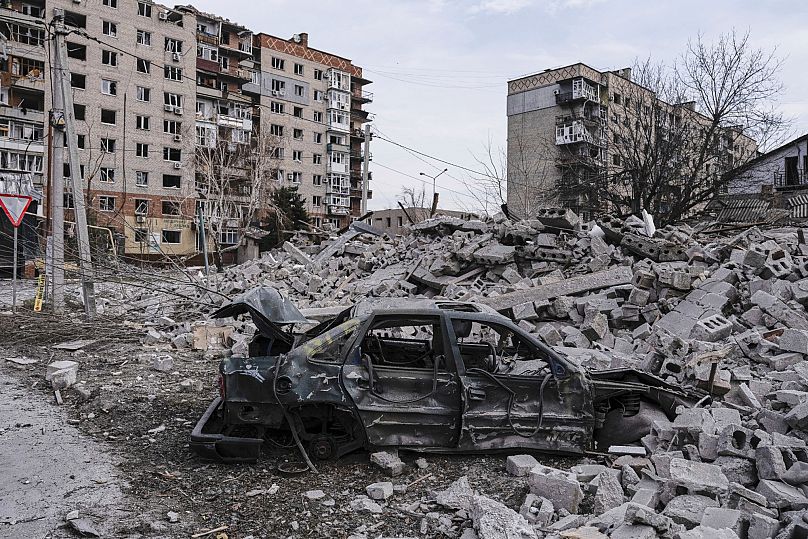
European leaders emphasize the importance of preparedness. European Commissioner for Crisis Management, Hadja Lahbib, remarked, “We need to think big because the threats are greater.” Roxana Minzatu, Commissioner for Preparedness, added, “The pandemic showed us that acting together, in solidarity, is crucial. It strengthens us.“
Lieutenant Colonel Manolo Cámara, author of the book “Prepárate” (Get Ready), has been training civilians in survival strategies for years. He notes a shift in public interest, saying, “There wasn’t much interest before. The potential for war in Europe has made people more concerned, although in Spain, the interest is less than in other parts of the EU.“
In his training courses, held in various Spanish cities, Cámara teaches essential survival skills. “You need to have your backpack ready, know how to start a fire, find water, build a shelter, and navigate with a map. In wartime, food, water, and medical support will be scarce. Knowing how to act is crucial.“
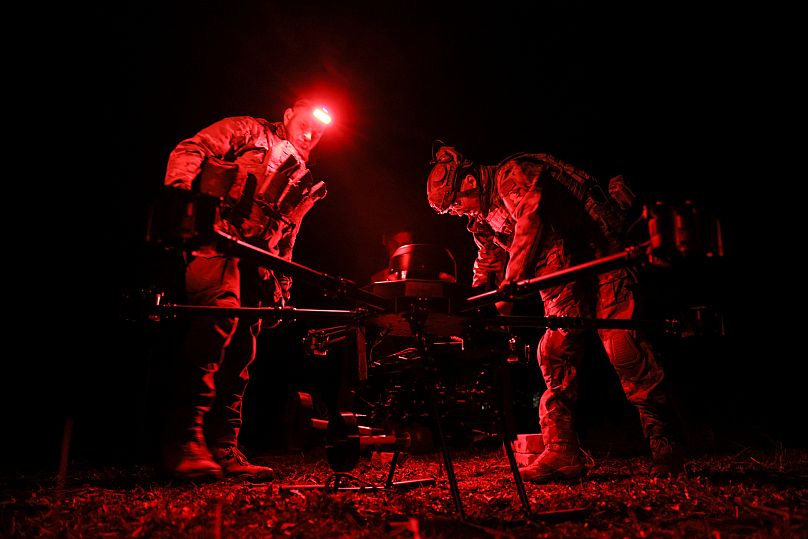
Ignacio Ortega, head of instruction at the Spanish School of Survival, confirms the increase in interest. “We have people from all walks of life participating — not just those in security fields, but entire families and independent professionals. Since the conflict in Ukraine, the profile of our students has changed: we used to attract nature enthusiasts, but now it’s regular families concerned about the future.“
With around 2,000 students annually, Ortega stresses the importance of prevention. “The best survival is the one you avoid. Before any activity, assess the risks and prepare with the right resources and knowledge.” Urban crises, he warns, are particularly challenging. “Most people will face survival situations in cities, without electricity or supplies, not in idyllic forests.“
The growing tensions between Russia and NATO have brought the term “nuclear war” into common discourse. Experts suggest a paradigm shift as the EU advocates for stockpiling supplies in case of conflict. Countries like France, Norway, Finland, and Sweden are distributing war manuals, while Russia is manufacturing mobile nuclear shelters, underlining the urgency for preparedness in countries near the conflict zone.
In Spain, the demand for private bunkers has soared since the invasion of Ukraine. The government is crafting a National Civil Protection Plan for “military risk,” but currently, there are only four public nuclear shelters available, primarily located in the capital: the residence of the Spanish Prime Minister, the Moncloa Palace, the Torrejón base, El Capricho park, and the Ébora Hotel (Toledo). Metro tunnels could serve as shelters, but they might not offer sufficient protection against nuclear radiation.
With an estimated 400 private bunkers, Spain lags behind nations like France and Germany. Cámara advises, “It’s challenging to have a shelter at home, but if you have a second home in the countryside or know someone with a place in another area, use it as an alternative.“
Cost remains a significant barrier, with a typical bunker costing around €150,000. Companies like VIP Bunker provide luxury models exceeding €350,000, as well as more budget-friendly options tailored to the owner’s requirements.
An effective bunker should be at least 10 meters deep, with robust walls, air and water filtration systems, and impact-resistant doors. For nuclear protection, steel coatings are necessary.
Given the limited public options, many individuals are opting to prepare independently. Experts interviewed by Euronews believe this trend is on the rise: “There’s no need to panic, but being prepared is wise.“
SİGORTA
6 saat önceSİGORTA
2 gün önceSİGORTA
2 gün önceDÜNYA
11 gün önceSİGORTA
15 gün önceSİGORTA
15 gün önceSİGORTA
15 gün önce 1
Elon Musk’s Father: “Admiring Putin is Only Natural”
11399 kez okundu
1
Elon Musk’s Father: “Admiring Putin is Only Natural”
11399 kez okundu
 2
Minnesota’s Proposed Lifeline Auto Insurance Program
9341 kez okundu
2
Minnesota’s Proposed Lifeline Auto Insurance Program
9341 kez okundu
 3
Introducing Vivo Y300 Pro+: A Blend of Power and Affordability
7293 kez okundu
3
Introducing Vivo Y300 Pro+: A Blend of Power and Affordability
7293 kez okundu
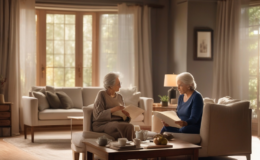 4
What’s the best car insurance for seniors?
5954 kez okundu
4
What’s the best car insurance for seniors?
5954 kez okundu
 5
American Nurse Survives Harrowing Moped Crash in Thailand
2177 kez okundu
5
American Nurse Survives Harrowing Moped Crash in Thailand
2177 kez okundu
Veri politikasındaki amaçlarla sınırlı ve mevzuata uygun şekilde çerez konumlandırmaktayız. Detaylar için veri politikamızı inceleyebilirsiniz.